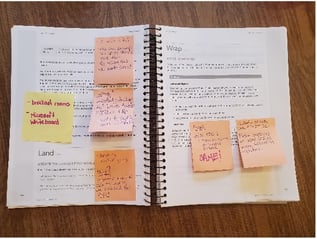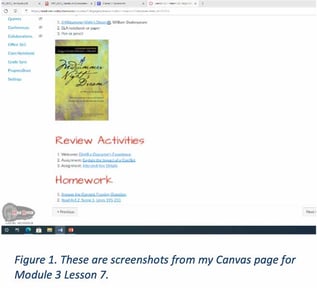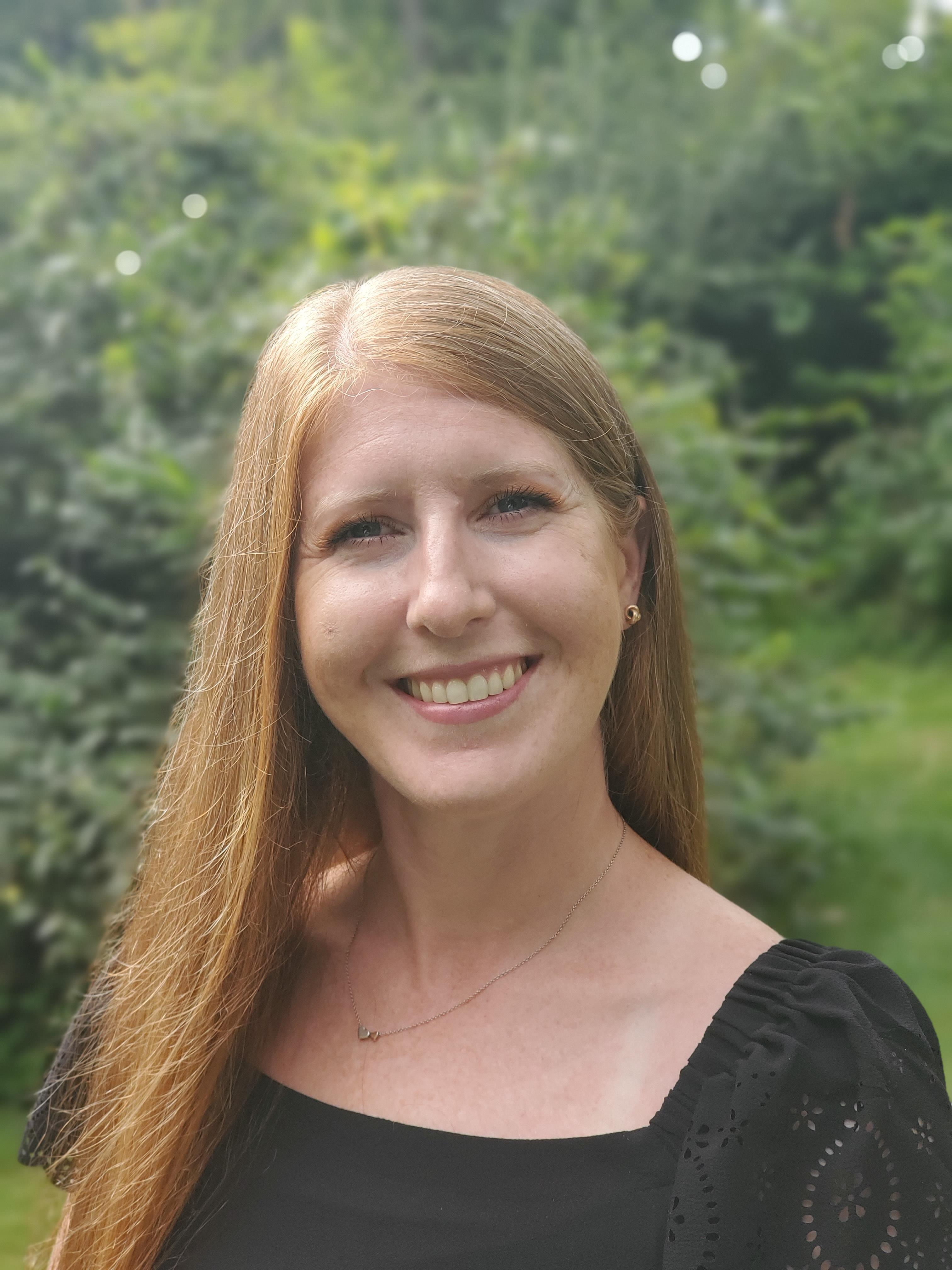Posted in: Aha! Blog > Wit & Wisdom Blog > Preparation > How I Prepare to Teach Wit & Wisdom®
This month, we asked educators across the country to reflect on their preparation for Wit & Wisdom® instruction. Krystle Gleason, a Grade 8 teacher at Mad River Local Schools in Ohio and a professional development facilitator for Great Minds®, shares her steps to prepare for Wit & Wisdom instruction—and how that preparation has changed over the last six years of implementation.
The Grade 8 department at my school piloted Wit & Wisdom® five years ago, and our district began a Kindergarten through Grade 8 implementation the following year. I learned early on that preparation is a key element in successfully implementing this unique and exciting curriculum. Preparation for teaching Wit & Wisdom requires both internalizing the lessons and planning the practical logistics. In doing this work collaboratively, each teacher brings their experiences, strengths, and ideas for the benefit of everyone—teachers and students alike.
Module-Level Preparation
The backward design approach of Wit & Wisdom influences how our team prepares for instruction. We complete the Module Study Protocol as a group, and any steps that we don't have time to complete, we work through individually. Our team tries to complete this step at least one to two weeks before a new module begins. Currently, we use a 45-minute shared planning time, but early in our implementation, we took advantage of more extended time during professional development days.
Each year our team engages in some aspects of the Module Study Protocol. For teachers who have completed the Module Study Protocol multiple times, there is an added benefit of referring to previous notes while hearing the fresh perspectives of new teachers. For instance, I remember being inspired by a new teacher's comments about Module 2, The Great War. She stated that some of the most gruesome scenes in All Quiet on the Western Front—one of the core texts in the module—also included beautiful descriptive language and, in her opinion, the ending of was so exceptional. The first time I read the book, the conclusion dashed my hopes for Paul, but I gained a deeper appreciation for the ending through my colleague's perspective. Her joy made me view the story with new eyes.
Focusing Question Arc Preparation
Throughout a module, our department meets weekly during shared planning time. We structure our conversations by collaborating on the Focusing Question Arc Study Protocol. We review the Focusing Question Task before beginning our study of the arc of lessons. The Focusing Question Arc protocol helps us understand the task and how we will assess it. The protocol also helps us elevate the most essential instructional tasks that students complete throughout the arc of lessons.
We also examine all the Checks for Understanding (CFU) within an arc and the accompanying Success Criteria found in the Analyze section of the lesson. We keep the Content Stage in mind as we decide how to assess student understanding. At the Wonder stage, we formatively consider the work students produce and use the Analyze box to help us make decisions about adjustments or feedback students may need. As students progress further through the Content Stages, we pay close attention to the Know and Distill stages to understand where students were successful in a summative manner. Studying CFUs across the arc helps our team know what to look for and how to respond to our students’ learning.
Lesson-Level Preparation
My lesson preparation begins with reviewing the entire lesson in my Teacher Edition (TE). Then I examine more closely the lesson agenda and Checks for Understanding. I note the Content and Craft Stage for the lesson, and I read the Prepare summary paragraph. I dive more fully into the lesson by reviewing the following:
 Welcome activity,
Welcome activity, - Launch section,
- Activities that comprise the Learn section,
- Land and Wrap sections, and
- My annotations from previous years (sticky notes).
After familiarizing myself with the lesson, I think through the action steps students will take and the purpose of each task. I jot these thoughts on sticky notes. I make connections between the current and upcoming lessons based on my team's work during the Module Study Protocol and the Focusing Question Arc protocol preparation. I also connect the current lesson and upcoming assessments, including the Focusing Question Task and End-of-Module Task.
After teaching a lesson, I create a Reflection sticky note to record successes and challenges. I also note any component that may benefit from a minor revision when I teach the lesson the following year.
Creating Supporting Materials

I also find it helpful to use the preparation protocols to internalize a lesson before creating any supporting materials, including slide presentations or digital resources. Internalizing a lesson ensures that my teacher-created materials help with pacing and support student learning.
During the first year of implementation, I wanted to include a slide presentation to provide students with a visual, elevate important parts of the lesson, and improve my pacing. After teaching Wit & Wisdom for several years, I was invited by Great Minds to serve as one of the creators of Projected, the slide decks included in Wit & Wisdom in Sync™. I learned that less text on each slide is more impactful for students. As a result, I set out to simplify the original slide presentations from year one. Using speaker notes also helps with pacing without overwhelming students with the minutiae of the lesson.

Last year, like so many teachers, I taught remotely. Canvas became a vital digital learning management tool for my students to access the information needed for each class. As I prepare to teach in person this year, I will continue to use Canvas, since it provides students with organized information, access to lesson materials, a digital location for submitting completed assignments, and a platform to receive timely feedback, whether at home or at school.
Technology Changes Collaboration
Technology is also influencing how I collaborate with other teachers. Recently on the Wit & Wisdom Facebook group, a Grade 8 teacher reached out for some assistance as she prepared to implement Wit & Wisdom for the first time. I, along with many other experienced Wit & Wisdom teachers, offered to connect with her.
We recently met on Zoom videoconferencing service to discuss Grade 8 Module 1. We began the meeting by collaborating on a Padlet where the experienced teachers documented successes, challenges, and questions about teaching the curriculum. Our collective ideas guided the conversation. It was a fun and helpful way to collaborate with other teachers and provide new teachers with some wisdom and guidance as they begin their journey with Wit & Wisdom. The group plans to meet again throughout the school year to discuss subsequent modules.
One of my favorite things about teaching Wit & Wisdom is participating in the community of educators who share the passion I have for this amazing curriculum. If you too, enjoy discussing curriculum ideas and sharing stories, I encourage you to check out the opportunities Great Minds provides teachers to connect through social media.
Effective preparation is an investment of time each year, but even in year six, it’s still worth it. Preparation does get easier every year, but there is also more to learn and new ideas worth investigating with new colleagues, both in my own school and online.
Submit the Form to Print

Krystle Gleason
Krystle Gleason is an eighth-grade language arts teacher at Mad River Local Schools in Dayton, Ohio. She has had the opportunity to teach Wit & Wisdom in her classroom for six years (fifteen years overall), and in that time, she has seen how the curriculum has changed her students and the teachers in her department. Her students are more engaged and excited to learn, and the teachers have enjoyed a more collaborative environment where ideas and teaching materials are readily shared. Krystle has always been passionate about helping her students reach their potential, but now she is excited to share her passion with other Wit & Wisdom teachers. Krystle began working this summer as a PD Facilitator for Great Minds, and she will continue with this work as a PD Fellow during the school year.
Topics: Preparation











